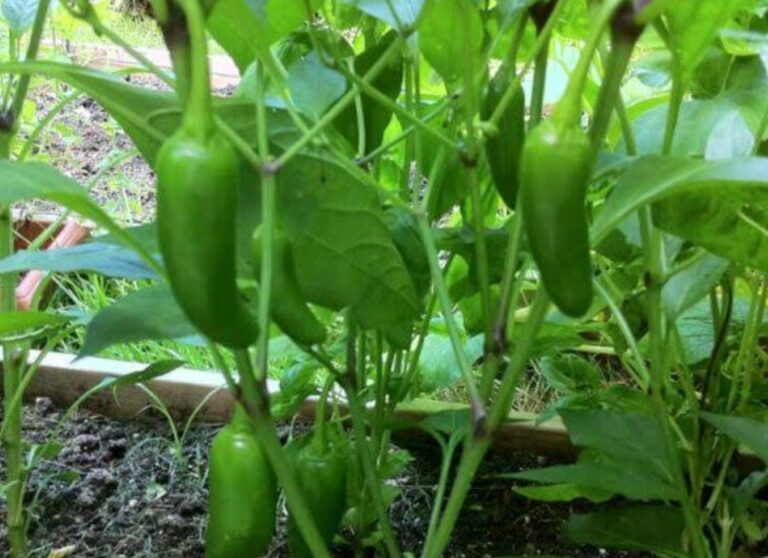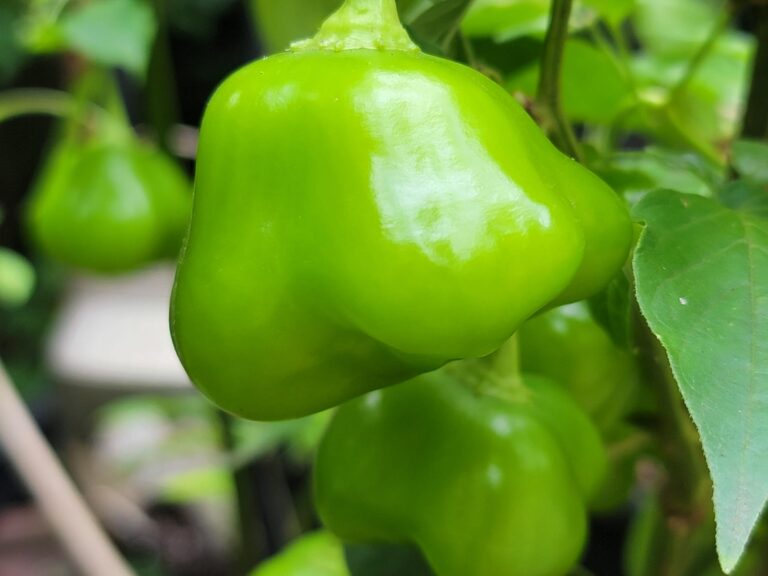An Ultimate Scorcher: 4 Benefits of Ghost Pepper
Introduction
The Ghost Pepper, also known as Bhut Jolokia, is one of the world’s most infamous chili peppers, recognized for its high heat and distinct flavor profile. This pepper, which originates in northeastern India, specifically Assam, Nagaland, and Manipur, has piqued the interest of chili fans and culinary adventurers all over the world. The Ghost Pepper, once certified by Guinness World Records as the hottest chili pepper on the earth, has a Scoville Heat Unit (SHU) value that frequently exceeds 1 million, making it a powerful presence in any cuisine. But the Ghost Pepper is more than simply a flaming fruit; it has a rich cultural background and may be used in a variety of ways outside of the kitchen.
The Ghost Pepper’s function in traditional medicine, as well as its potential health benefits, including as metabolism-boosting and pain-relieving capabilities, demonstrate nature’s astonishing ability to pack great benefits into little packets. In this blog, we will look at the intriguing history, science, and applications of the Ghost Pepper, as well as why it’s still a symbol of culinary prowess and natural wonder, and why it continues to fascinate and inspire people all over the world.
Origin and History
The Ghost Pepper’s name roughly translates to “ghost chili” in Assamese, an appropriate term given its nearly supernatural heat intensity. The indigenous inhabitants of northeastern India have been cultivating this chili for years, using it as both a food ingredient and a medicinal medicine. Traditionally, the pepper was utilized in local recipes, generally in little amounts due to its intensity, and in a variety of therapeutic purposes, such as curing stomach problems and combating the humid climate.
The pepper gained worldwide recognition in 2007 when it was officially designated by Guinness World Records as the hottest chili pepper on the planet, boasting an impressive Scoville rating exceeding one million units. In contrast, the jalapeño pepper, which is commonly known for its moderate heat, measures approximately 8,000 Scoville Heat Units (SHU), highlighting the extraordinary intensity of the pepper in question. This rating also indicates the concentration of capsaicin, the ingredient that causes the pepper’s pungency. Despite being overtaken by other chili kinds, the Ghost Pepper is still one of the world’s hottest and most renowned peppers.
The Science Behind the Heat
The Ghost Pepper‘s heat is derived from capsaicin, a chemical component that attaches to pain receptors in the mouth and skin, producing a burning sensation. Capsaicin is a pepper’s defensive mechanism, preventing animals from eating the fruit and thereby protecting the seeds. It has the opposite impact on people, who are frequently lured by the powerful sensation it causes.
Capsaicin interacts with the body’s TRPV1 receptor, which detects and regulates temperature. When capsaicin binds to this receptor, it causes a heat response, which produces the characteristic burning sensation associated with spicy peppers. This reaction is not confined to the lips; it can also result in perspiration, tears, and the production of endorphins, the body’s natural painkillers. Many people find eating spicy peppers to be a thrilling experience due to the release of endorphins.
The Ghost Pepper in Agriculture
The cultivation of Ghost Peppers demonstrates the resilience and skill of gardeners and farmers. These peppers are primarily grown in warm, humid climate, and thrive in well-drained, loamy soils. The plants require a lengthy growing season, sometimes taking up to 160 days to mature, which is longer than many other chili kinds.

Farmers have mastered the skill of growing Ghost Peppers, frequently employing organic techniques passed down through generations. The peppers are often sown in nurseries and then moved to fields when they reach a particular size. They require careful water management because both drought and excess precipitation might reduce output.
One of the challenges of growing Ghost Peppers is their vulnerability to pests and diseases. Traditional farming practices, such as crop rotation and the use of natural insecticides, can help reduce these dangers. In recent years, there has been an increasing interest in using sustainable farming approaches to boost productivity while maintaining pepper quality.
The Ghost Pepper in Home Garden
Growing ghost peppers in home gardens presents a distinct challenge and reward for experienced gardeners. These peppers, scientifically known as Capsicum Chinense, require careful management of soil quality, sunlight, and watering. As mentioned above these peppers require well-drained, loamy soil with a pH ranging from slightly acidic to neutral (6.0-7.0) and benefit from organic compost to improve nutrient levels. They require at least six hours of direct sunlight per day to develop fruit. Regular watering is necessary, but overwatering can cause root rot, therefore soil moisture should be constantly maintained.

Due to their long growing season, which may last up to 160 days, Ghost Peppers are normally started indoors and transferred outside whenever temperatures reliably rise over 70°F (21°C). Aphids and spider mites are pests that can harm plants, so natural therapies such as neem oil are recommended to protect them. While the peppers’ strong heat, with Scoville ratings exceeding 1 million units, makes them a powerful addition to the kitchen, they must be handled with caution to avoid skin irritation. Successfully planting Ghost Peppers not only produces a flaming harvest but also adds a colorful, exotic element to any backyard garden.
Culinary Uses

While the Ghost Pepper is well recognized for its tremendous heat, it is also admired for its distinct flavor profile. When used sparingly, the pepper’s fruity, somewhat sweet flavor can lend depth and complexity to meals. It is a common component in chutneys, curries, and pickles, where it adds flavor and spice.
Ghost peppers are commonly used to make fiery sauces. These sauces are popular among chili connoisseurs, who value the pepper’s capacity to give a slow-building heat that builds over time. When used in moderate quantities, Ghost Peppers can improve the flavor of a meal without overwhelming the tongue, making them a versatile ingredient in both conventional and modern cuisine.
Aside from sauces and condiments, Ghost Peppers are also used dry and powdered form. Powdered pepper can be used to spice up recipes or as a meat rub. In some areas, the pepper is even smoked to impart a distinct, smokey flavor that complements a variety of savory foods.
Health Benefits

- Capsaicin, the chemical responsible for Ghost Pepper heat, has been widely researched for its health advantages. One of the most well-known properties of capsaicin is its ability to increase metabolism. When ingested, capsaicin raises the body’s temperature, which can increase the number of calories expended. Capsaicin is a popular weight reduction supplement ingredient due to its thermogenic action.
- Another notable advantage of capsaicin is its ability to reduce pain. The chemical is used as a topical cream or ointment to treat arthritis, neuropathy, and muscle pain. Capsaicin, by desensitizing TRPV1 receptors, can lessen pain sensation and provide comfort to patients suffering from chronic diseases.
- Capsaicin also has antibacterial properties, which make it useful against some bacteria and fungus. In traditional medicine, Ghost Peppers have been used to heal illnesses and preserve food. Furthermore, research has indicated that capsaicin can benefit heart health by boosting blood circulation and lowering cholesterol levels.
- Emerging research reveals that capsaicin may also have anticancer effects. Some research suggests that capsaicin can cause apoptosis, or programmed cell death, in cancer cells while not affecting healthy ones. While additional research is needed, these data suggest that capsaicin may be useful as a supplementary treatment for certain forms of cancer.
The Ghost Pepper in Popular Culture

The Ghost Pepper’s renown has spread beyond the kitchen and the laboratory, becoming a cultural phenomenon in its own right. The pepper has appeared on several television shows, YouTube challenges, and social media posts, where courageous (or foolish) people attempt to consume it raw or in big quantities. These challenges frequently go viral, attracting millions of spectators who are attracted by the passionate reactions of people who take part.
The pepper has also inspired a variety of products, including hot sauces, snacks, and novelty items such as “ghost pepper chocolate” and “ghost pepper vodka.” These items appeal to the growing demand for extreme flavors and experiences, allowing consumers to push their limits.
In addition to its cultural significance, the Ghost Pepper has sparked scientific interest. Researchers analyzed the pepper’s genetic makeup to better understand the variables that contribute to its heat, yielding findings that could aid in the cultivation and breeding of other chili species. The pepper’s distinct qualities have also made it an important tool in the study of pain and inflammation, cementing its place in both the culinary and scientific worlds.
Environmental Impact
Ghost Pepper production has a low environmental impact, particularly when done using conventional, organic methods. Pepper plants require little water or synthetic fertilizers, making them a viable crop in resource-constrained areas. Furthermore, natural pest management methods eliminate the need for artificial pesticides, which can be damaging to the environment.
In recent years, there has been a drive for sustainable agriculture in the areas where they thrive. Initiatives to promote organic agricultural methods and improve soil health have been implemented, with the goal of increasing yields while reducing environmental effect.
These measures not only benefit the environment, but also help small-scale farmers who rely on Ghost Pepper farming for income.
Global demand for Ghost Peppers has offered economic opportunities around the world specially where this pepper is a major cash crop. The local consumption and export of ghost peppers and related goods has provided much-needed cash to rural populations, thereby improving living conditions and reducing poverty.
Safety and Precautions
Despite the numerous benefits of the Ghost Pepper, it is critical to use it with caution. The pepper’s intense heat can cause significant discomfort if it comes into contact with the skin, eyes, or mucous membranes. When handling Ghost Peppers, wear gloves and avoid touching your face. If the pepper gets into contact with your skin, cleaning it with soap and water can help to relieve the burning feeling.

Consuming significant doses of Ghost Pepper can cause gastrointestinal upset, such as stomach pain, nausea, and vomiting. It is advisable to consume the pepper in moderation, particularly for individuals who are not used to spice and heat. If the heat becomes too much, drinking milk or eating dairy products such as yogurt can help to cool things down.
While Ghost Pepper is typically safe to ingest in moderation, anyone with specific medical conditions, such as ulcers or irritable bowel syndrome, should consult a doctor before adding it to their diet. Furthermore, the pepper should be kept out of reach of youngsters and pets, as its Scoville heat can be dangerous to them.
The Future of Ghost Peppers
The Ghost Pepper’s rise from regional delicacy to global popularity demonstrates its distinct features and the growing interest in extreme flavors. As the demand for spicy cuisine grows, the Ghost Pepper is likely to remain a popular option for individuals looking to add spice and flavor to their meals.
In the agricultural sector, continuing research is being conducted to improve Ghost Pepper cultivation, with an emphasis on boosting yields, improving disease resistance, and minimizing environmental impact. These efforts are likely to benefit both farmers and consumers, providing a consistent supply of high-quality peppers for many years to come.
The pepper’s possible health advantages are also the subject of ongoing research. Scientists are looking for novel ways to use capsaicin’s qualities for medical applications ranging from pain relief to cancer treatment. As our understanding of capsaicin expands, the Ghost Pepper may play a more essential role in the development of new cures and treatments.
Conclusion
The Ghost Pepper is more than just one of the world’s hottest peppers. Its extreme heat, distinct flavor, and purported health advantages have earned it a spot in kitchens and laboratories all around the world.
Whether you’re a seasoned chili fan or a curious newbie, the Ghost Pepper provides a unique culinary experience that is both hard and gratifying. As we learn more about their many uses and benefits, it becomes evident that its legacy will only grow, making a lasting impact on the world of food and beyond.








